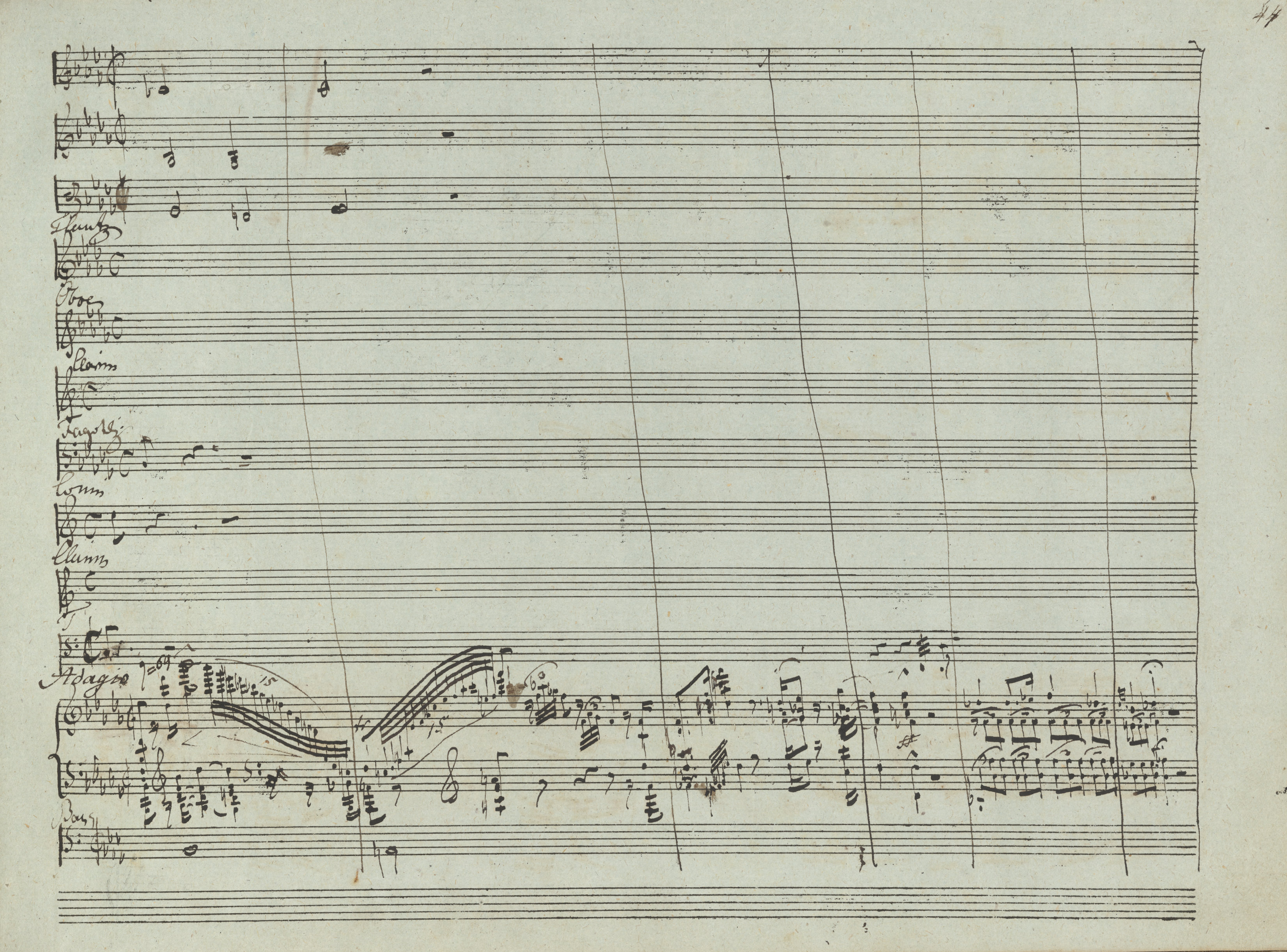Op. 2, Variations in B♭ major
Op. 10, 12 Etudes
Op. 11, Concerto in E minor
Op. 21, Concerto in F minor
Op. 22, Polonaise in E♭ major
Op. 24, 4 Mazurkas
Op. 25, 12 Etudes
Op. 26, 2 Polonaises
Op. 27, 2 Nocturnes
Op. 28, 24 Preludes
Op. 30, 4 Mazurkas
Op. 35, Sonata in B♭ minor
Op. 50, 3 Mazurkas
Op. 63, 3 Mazurkas
Op. 64, 3 Waltzes
(Op. 4), Sonata in C minor




Op. 2, Variations, complete
Both in the last L.H. chord and in the R.H. arpeggio on the 4th beat of the bar, neither AsI nor Af nor A (→GE1→FE,EE) contain accidentals before g/g notes in various octaves. Actually, harmonically speaking, g
notes in various octaves. Actually, harmonically speaking, g would be possible; however, in this context, it is much more likely that we are dealing with overlooked naturals:
would be possible; however, in this context, it is much more likely that we are dealing with overlooked naturals:
- after changing the key signature, Chopin was uncertain which were valid – this is proven by numerous unnecessary flats before d
 , g
, g , a
, a and even e
and even e and b
and b in bars 255-259 in AsI; in A there is still a flat before B
in bars 255-259 in AsI; in A there is still a flat before B at the end of bar 255 and before g
at the end of bar 255 and before g 2 in bar 256;
2 in bar 256; - diminished seventh chords belonged to young Chopin's favourite ones.
The decisive argument for g is provided by the orchestral part – there is a g note in the 2nd violins, and the violins could not play g here.
here.
The first edition to add naturals was GE2 (→FESB), 4 accidentals in total raising g 1 to g1 in the L.H. and g
1 to g1 in the L.H. and g 2, g
2, g 1 and g
1 and g to g2, g1 and g in the R.H. The overlooked
to g2, g1 and g in the R.H. The overlooked  to the 2nd demisemiquaver (g3) was added by GE3, in which, however, the accidental to the penultimate demisemiquaver, g, was overlooked.
to the 2nd demisemiquaver (g3) was added by GE3, in which, however, the accidental to the penultimate demisemiquaver, g, was overlooked.
Compare the passage in the sources »
category imprint: Interpretations within context; Differences between sources
issues: Errors in GE, GE revisions, Errors of A, Last key signature sign
notation: Pitch

